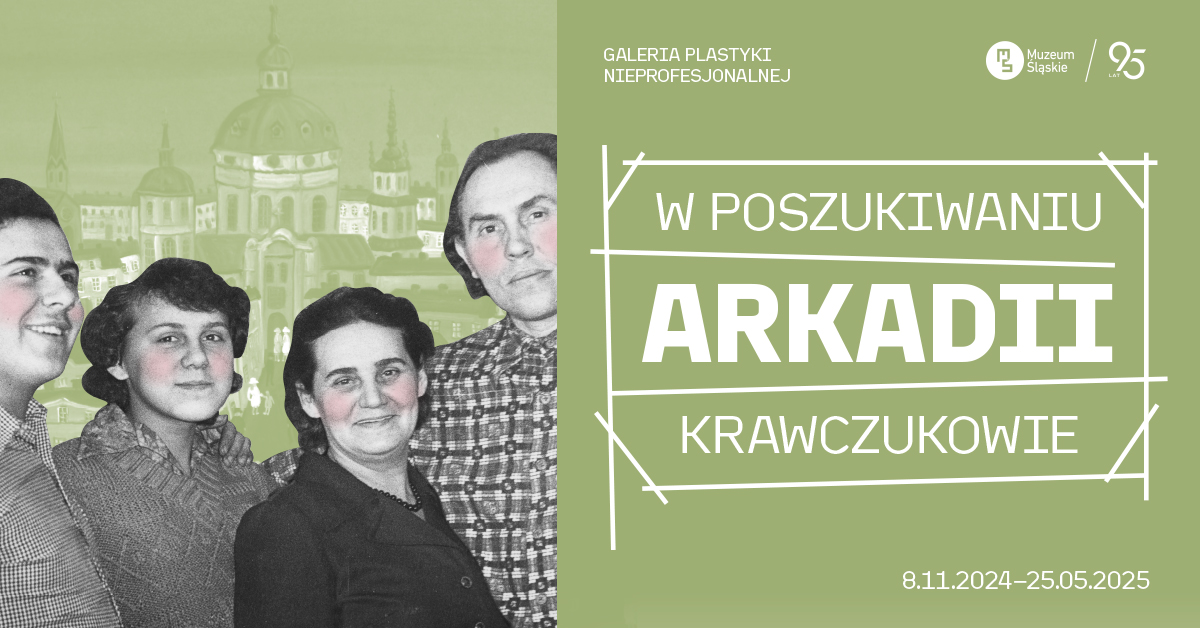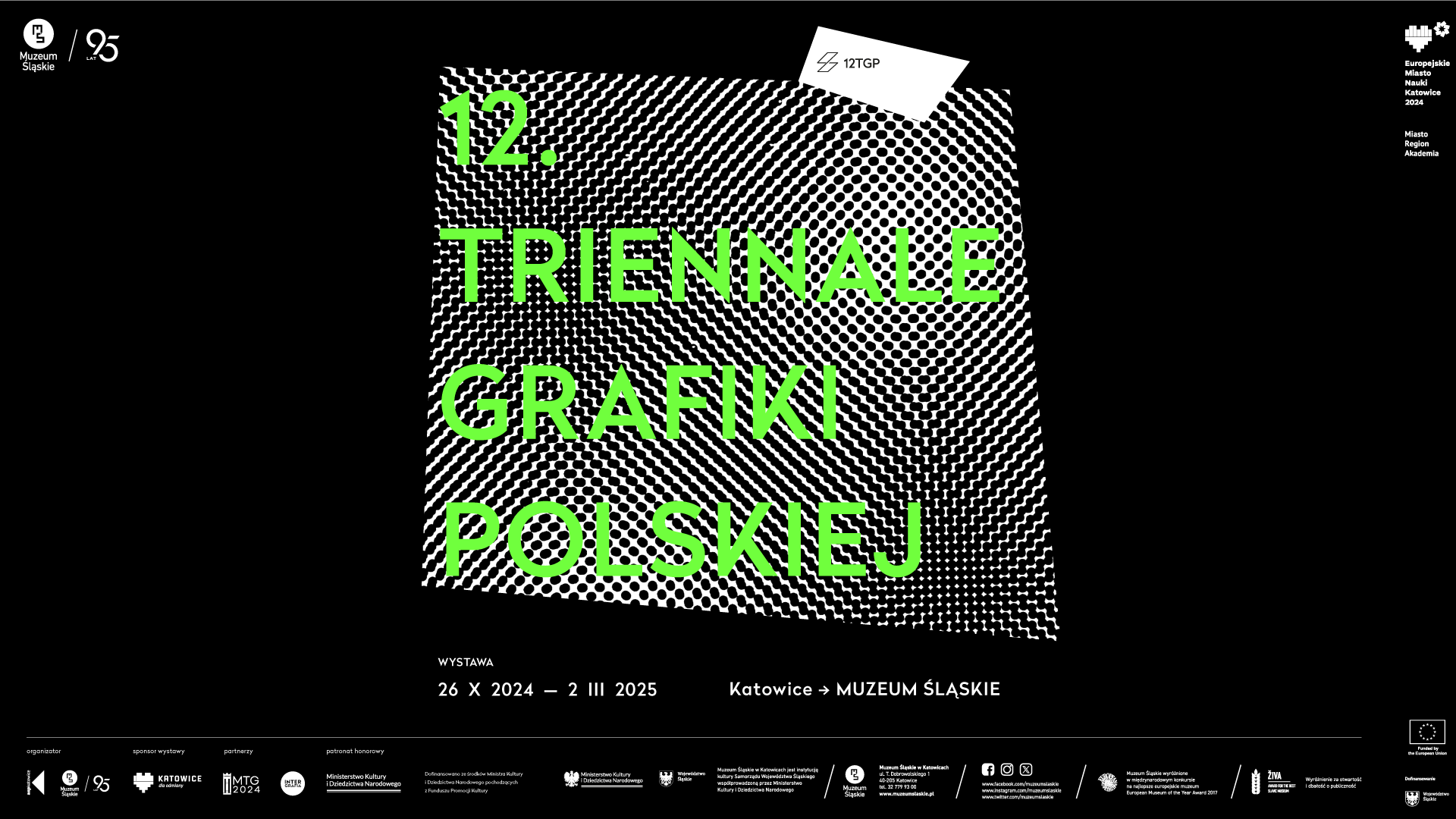Virtual exhibition tour: Zajawka. Silesian Hip-Hop 1993–2003
- 28 maja, 2019
- Kategoria: Archiwum wystaw
Zajawka. Silesian Hip-Hop 1993–2003
Hip-hop was born in the late 1970s in poor African-American communities. For most of them, it was often the only available form of public expression. For the residents of poor districts of American metropolises, it was a chance to leave them. Transplanted to Poland in the 1990s, hip-hop was deprived of its political dimension of the fight against racism and exclusion. However, it did not become an empty form or an artificial copy of its American prototype.
Polish hip-hop became a medium through which young people spoke, very often paving their way for a better social position. Zajawka is about the beginnings of fascination with hip-hop and shows the first decade of its development, the first creative attempts and struggle with problems typical for the pioneers in each new field. Their initial effects often seemed ridiculous, but for many teenagers of that time these experiences shaped their later choices, tastes and worldviews.
Consciousness / Calendar of Events 1993–2003
The calendar of events from 1993–2003 was shown from the perspective of an adolescent living in the 1990s, for whom new episodes of “YO! MTV Raps” might have been more significant than the changing political situation in Poland. At that time, hip-hop, and particularly rap music, was deeply embedded in the current times and often commented on the surrounding reality. Therefore, the resulting stream of memories also consists of political, social and cultural events that largely correspond to the lyrics of Polish hip-hop. Some of them show, in a symbolic way, the end of a certain era and the changes taking place in Poland.
Experience
Hip-hop, unlike any other subculture of the 1990s, was focused on activity. The traditional division between the audience and the performer was blurred at every step. The members of the audience were at the same time creators and would often have a go at several areas. It was not strange to see a meeting of freestyling MCs in front of a club just after their performance on the stage. Everyone had his or her tag, even if they would never write it in a public place. Being part of the hip-hop community was associated with gaining experience within its elements (rap music, DJing, graffiti, breakdance) and knowledge about them.
Self-Sufficiency
The popularity of hip-hop in the world is connected, among other things, with the ease of creating each of its elements. A spray can is probably the easiest painting tool. All you need to breakdance is comfortable footwear and a cardboard that serves as a dance floor. However, the example of music shows how the simplicity of tools influenced hip-hop activity. Home recording studios or underground album covers are just some examples of creative solutions resulting from the need to create.
Everyday Life
In Poland in the 1990s, baggy pants, oversized hoodies, caps or bandanas could draw attention and undoubtedly made young people dressed in this way stand out from the crowd.
Hip-hop fashion allowed them to express their individuality against the prevailing trends. Their identification with a group, with baggy pants being its symbol, made it easier to recognize the ones with whom they could always find a common language. The characteristic style of dressing was often a manifestation of commitment to hip-hop culture, which also affected schools, friends, families and everyday life.
Visibility
The city was a natural space for hip-hop, as it was the background for activities taken by teenagers wearing baggy pants. It was in its context that stories told by rappers happened, regardless of whether they were about love, party or skirmishes with the police. With the development of hip-hop, there was a symbolic appropriation of urban space, which on the one hand gave the creators a sense of taming reality, and on the other hand, the opportunity of becoming popular in it.
The most visible and expansive element of hip-hop in the 1990s was undoubtedly graffiti. Often illegal, it gradually appeared even on the most exposed walls in city centers, sometimes competing with omnipresent colorful signs and billboards. A staircase, a railway station, a toilet in a club, residential garages or even cabinets in rooms were good places to leave a mark and become visible to others.
Glossary:
b-boy / b-girl – a breakdance dancer
breakdance (break) – a type of dance, one of the elements of hip-hop culture
beef – an overt conflict between two rappers, line-ups or DJs; it results in the creation of diss tracks
baggy – loose pants, often with a drop crotch
beat – a slang name for rhythmic background music in hip-hop songs
crew – a name for a graffiti painting group, e.g. a US crew, sometimes also called a squad
diss – a verbal attack on another rapper or band in the form of a piece of music or its fragment. Rap battles are often based on diss tracks
DJ – a person responsible for playing music in a club. An extremely important member of a hip-hop group, also responsible for scratching; often also a music producer. DJing is considered to be one of the elements of hip-hop culture
freestyle – rap improvisation
graffiti – a visual element of hip-hop culture; the often illegal painting of murals, mainly using spray paints. The created images are most often based on the letter which is the nickname of the author or the group
graffiti jam – group graffiti writing, generally legal
MC (Master of Ceremony) – a rapper, a hip-hop performer
spot – a slang term for a meeting place, most often informal. A spot may be a community bench, a sports field, but also a drying room in a block of flats, or a skateshop run by a friend
underground album – recorded and distributed by the author on his/her own
panel – a basic form of graffiti on a train
backjump – a colloquial name for a quickly written graffiti consisting of two colors, most often with a silver filling; sometimes also referred to as a ‘throw up’
skater – a person riding a skateboard
scratch – a sound created by moving a vinyl record forwards and backwards under a gramophone needle
tag – the signature of a graffiti writer or crew
wholecar – in graffiti slang, an entirely painted railway wagon. A wholetrain is an entirely painted train
writer – a graffiti painter
piece – in hip-hop slang, a graffiti work
yard – a spot where trains are painted
zajawka – the word originally meant a trailer encouraging to see the whole piece, e.g. a movie. In the 1990s, it was colloquially used to mean passion or desire to do something. Most often used by skateboarding and hip-hop subcultures
Pozostałe Archiwum wystaw

W poszukiwaniu Arkadii. Krawczukowie
8.11.2024-25.05.2025
przestrzeń wystaw czasowych na poziomie -2


